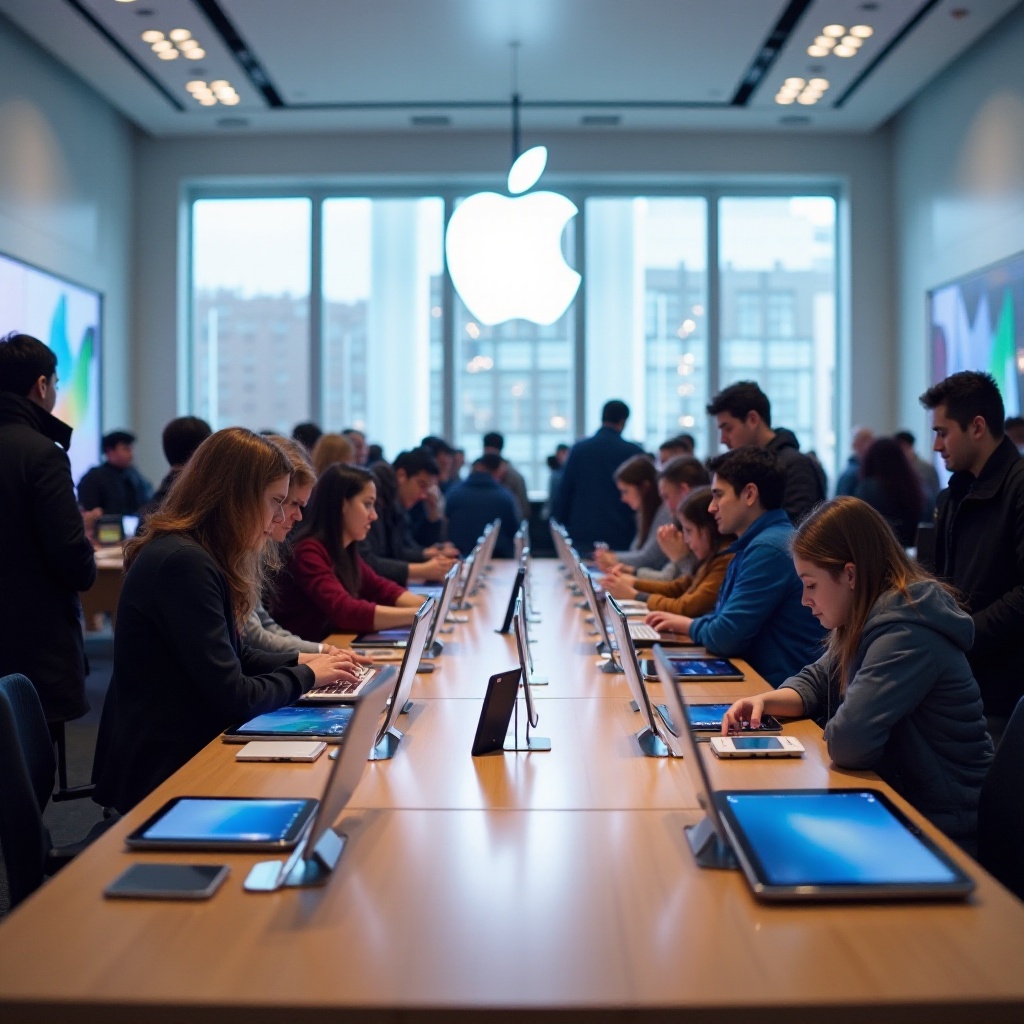Introduction
Apple’s prowess in the technology sector, particularly in the smartphone and tablet markets, is unparalleled. The company has transformed how devices are perceived, integrated, and used in everyday life. By forging a unique path in product innovation and leveraging a tightly-knit ecosystem, Apple has solidified its premier position in the market. Understanding the nuances behind this dominance is crucial in grasping the tech giant’s success story.

Historical Market Entry and Evolution
Apple’s journey in the smartphone and tablet markets commenced with the groundbreaking release of the iPhone in 2007. The device redefined what a mobile phone could be, setting new industry standards. This was followed by the introduction of the iPad in 2010, a product that revolutionized the tablet segment by offering a new computing experience midway between a smartphone and a laptop.
The evolution of these products has been marked by significant enhancements in hardware and software. Subsequent iPhone models have pushed the boundaries of technology, introducing features like retina display, advanced camera systems, Face ID, and more. Simultaneously, the iPad evolved to become a robust productivity tool with iterations like the iPad Pro, which introduced the Apple Pencil and keyboard, integrating the best of both laptop and tablet functionality.
Market Share and Sales Performance
Apple’s dominance in the smartphone and tablet markets isn’t merely anecdotal; it’s backed by impressive sales figures and market share. The iPhone consistently ranks among the top-selling smartphones globally, capturing a significant portion of the market share. In 2021 alone, Apple shipped over 237 million iPhones worldwide, demonstrating the product’s enduring popularity.
The iPad has also shown robust performance in the tablet market. It holds a substantial share of the market, appealing to both casual users and professionals. These figures are a testament to Apple’s ability to not only attract new users but also retain existing ones through a combination of innovative features and a compelling ecosystem.
Product Innovation and Technological Advancements
At the heart of Apple’s success story is an unwavering commitment to innovation. Each new release brings forth technological advancements that set the company apart from its competitors. For instance, the Retina Display on the iPhone brought unprecedented clarity and vibrant color reproduction, transforming user experiences.
Apple’s focus on designing powerful, yet energy-efficient processors like the A-series chips has propelled its devices to new heights in performance while ensuring longer battery life. The transition to its custom M1 chip in iPads has marked a gigantic leap, boasting desktop-class performance in a portable form factor.
Apple has consistently set trends in the industry with innovations like Face ID, a secure facial recognition technology, and advancements in photography with its multi-lens camera systems, improving image quality in every possible light condition.

The Apple Ecosystem: Integration Beyond Devices
One significant factor that distinguishes Apple from its competitors is a cohesive ecosystem that goes beyond individual devices. This seamless integration across its products creates a unified user experience that is tough to replicate. The iPhone, iPad, Apple Watch, Mac, and Apple TV communicate effortlessly, offering continuity in user activities across devices.
For instance, users can start an email on the iPhone and seamlessly finish it on the Mac. Apple’s ecosystem is further enhanced by services like iCloud, which keeps all data synchronized across devices, and features like Handoff and AirDrop, which significantly improve usability and convenience for users.
The Role of the App Store and Developer Community
The App Store, launched in 2008, plays a pivotal role in strengthening Apple’s position in the market. By providing a platform for developers to create and distribute apps, Apple has fostered an ecosystem where users have access to a wide variety of applications tailored to their needs. From productivity tools and games to health and fitness applications, the App Store offers over 2 million apps available to users worldwide.
Engagement with the developer community has been crucial for Apple. Through initiatives like the annual Worldwide Developers Conference (WWDC) and developer resources, Apple ensures continuous innovation and improvement in the app ecosystem. These efforts support developers in creating high-quality apps that further enhance the user experience, making iPhones and iPads more indispensable.
Marketing Strategies and Consumer Loyalty
Apple’s marketing strategies have contributed significantly to its dominance. The company has mastered the art of anticipation, consistently generating buzz and excitement around its product launches. The iconic ‘There’s an app for that’ campaign highlighted the utility of the iPhone, driving home the value of the App Store.
Moreover, Apple’s focus on positioning itself as a premium brand has paid off. The quality of their products, combined with sleek designs and user-friendly interfaces, engenders a sense of loyalty amongst consumers. Many iPhone users typically upgrade within the Apple ecosystem rather than switch to competitors, a testament to the strong brand allegiance that Apple has cultivated.
Challenges and Future Outlook
Despite its success, Apple faces numerous challenges. Competition is fierce, with companies like Samsung and Google continuously innovating and vying for market share. Regulatory scrutiny on issues like antitrust and privacy also poses potential hurdles for the tech giant.
However, Apple’s focus on innovation and an integrated ecosystem keeps it well-positioned for future growth. Prospects in emerging markets and the development of new products and services, such as augmented reality and potentially electric vehicles, also promise exciting avenues for the company’s expansion.

Conclusion
Apple’s dominance of the smartphone and tablet markets is a multifaceted narrative of innovation, strong market performance, seamless product integration, and strategic marketing. By continuously pushing the envelope, Apple not only leads but also reshapes the industry, setting benchmarks for others to follow.
Frequently Asked Questions
How has Apple maintained its dominance in the smartphone and tablet markets?
Through continual innovation, seamless integration within its product ecosystem, a robust developer community, and strategic marketing that fosters consumer loyalty.
What are the key innovations that set Apple’s tablets apart from competitors?
Innovations like the Retina Display, powerful processors like the M1 chip, the introduction of Apple Pencil, and seamless integration with other Apple devices make the iPad a leading choice.
What challenges does Apple face in the future to maintain its market leadership?
Intense competition from other technology companies, regulatory scrutiny, and the need to continue innovating to meet consumer expectations are significant challenges Apple faces moving forward.


